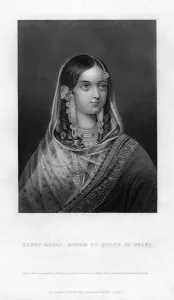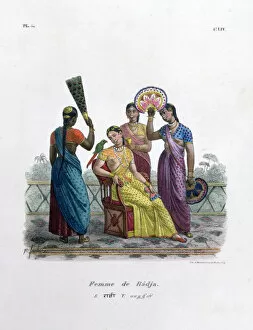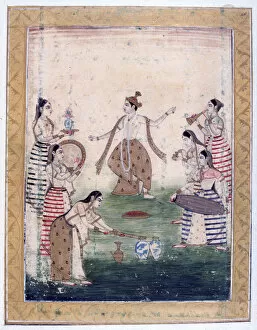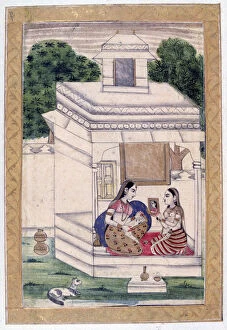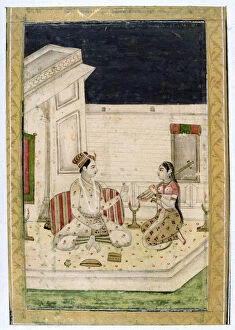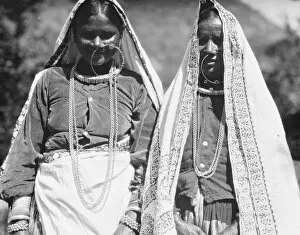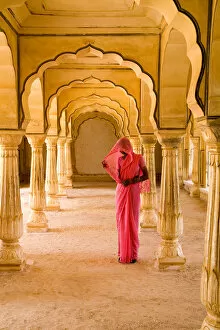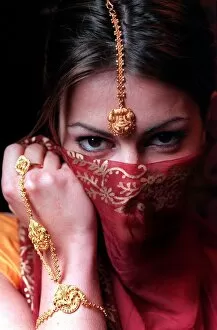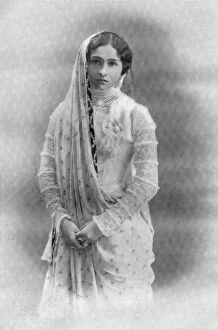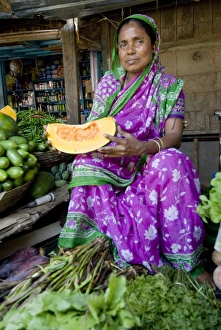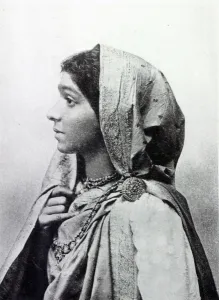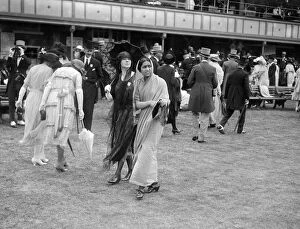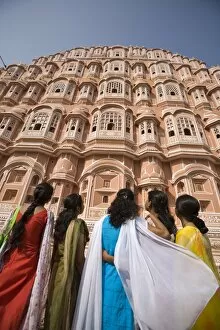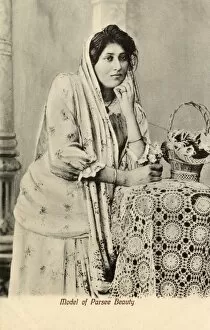Sari Collection (page 9)
The sari, a timeless symbol of grace and elegance, has been an integral part of Indian culture for centuries
All Professionally Made to Order for Quick Shipping
The sari, a timeless symbol of grace and elegance, has been an integral part of Indian culture for centuries. This traditional garment is not just a piece of clothing; it embodies the rich heritage and diversity of India. One can trace the origins of the sari back to ancient times, as depicted in the painting "Lakshmi" from 1894. Created by an unknown artist, this masterpiece showcases a princess adorned in a vibrant sari, listening to enchanting melodies played by female musicians. The intricate details on her attire reflect the craftsmanship that goes into making each sari unique. In Agra, India, another captivating scene unfolds with a sitar player draped in a colorful Rajasthani sari. The fabric's hues mirror the vibrancy found at every corner of this bustling city. From overhead views of fruit and vegetable markets to snapshots capturing daily life like "A Peep at the Train, " they are ubiquitous among women from all walks of life. Traveling through time brings us face-to-face with two Hindu women donning elaborate jewelry against palm tree backdrops in the 1860s-70s. Their saris serve as canvases for their individuality and cultural identity. Religious narratives also find expression within saris' folds; one such example is seen in Krishna Subduing Kaliya - where mythology comes alive through vivid illustrations on fabric inspired by Bhagavata Purana Series. No discussion about India would be complete without mentioning its architectural marvels like Taj Mahal. Here too, we witness women gracefully clad in saris paying homage to their heritage amidst breathtaking beauty. Beyond religion and architecture lies social diversity: A Parsi woman stands before a fire altar wearing her intricately patterned sari - representing yet another facet of Indian society's tapestry. Lastly, pilgrims embarking on journeys towards temples wear their humble yet elegant saris while seeking spiritual solace. These saris become a symbol of devotion and faith.




